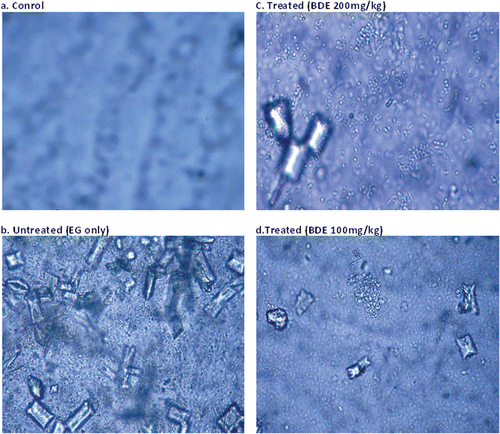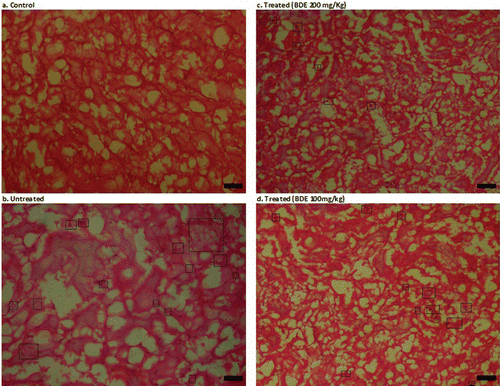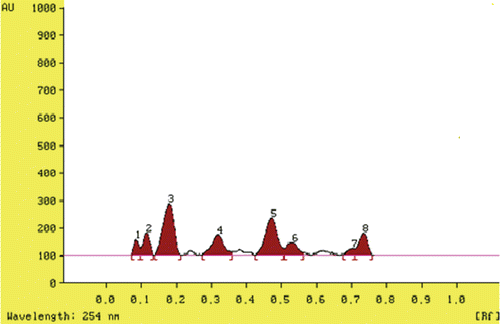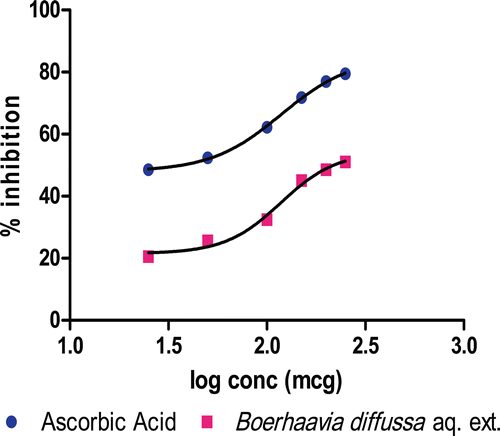Figures & data
Table 1. Effect of BDE treatment on oxalate excretion and renal function in rats.
Figure 3. CaOx crystals in the urine of different treatment groups (Leica EZ-4D) at 40 × 10× magnification. (A) Control rats showed very few or no crystals; (B) Untreated rats excreted numerous oval COM and pyramidal shaped COD crystals; (C and D) Treated rats excreted a significantly reduced number of crystals.

Table 2. Effect of BDE treatment on renal enzymes and other antioxidant markers in rat kidney homogenate analysis.
Table 3. Histopathological analysis of hyperoxaluria-induced renal damage and crystal deposits.
Figure 4. Histopathological examination of kidney slides of different treatment groups (Leica EZ-4D) at 10 × 10× magnification. (A) Control rats showing normal renal architecture; (B) Kidney of untreated rats showing polymorphic irregular crystal deposits tubular damage (in figure, black spots inside the rectangular box are crystal deposits); (C) BDE-treated (100 mg/kg) showed few crystal deposits and little dilation of tubules; (D) BDE-treated (200 mg/kg) showed a very few or no crystal deposits and nearly normal renal architecture.


